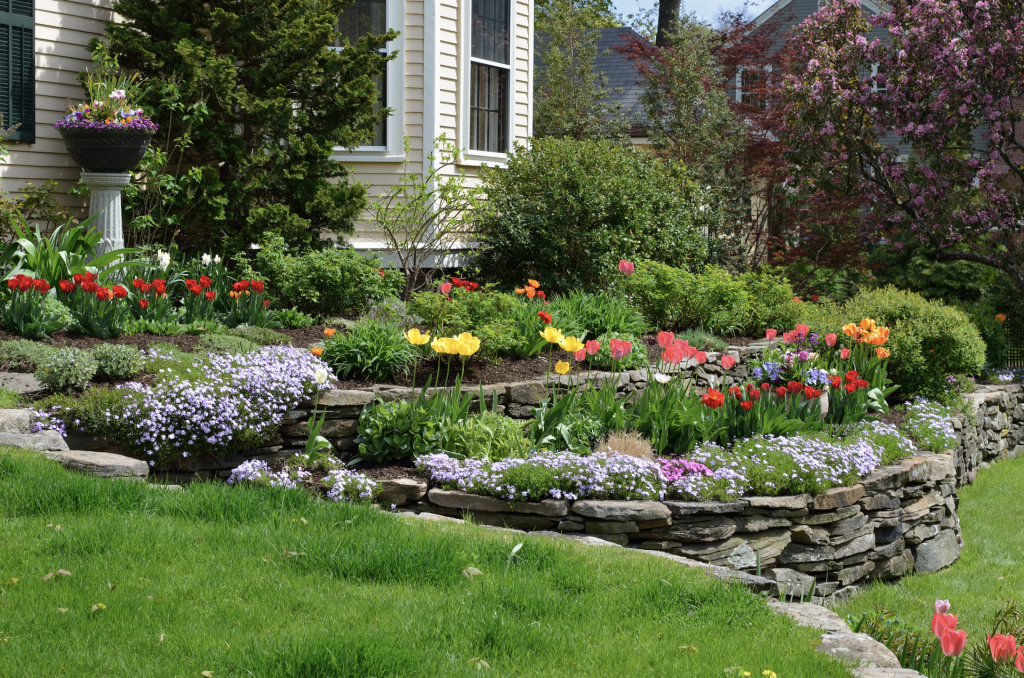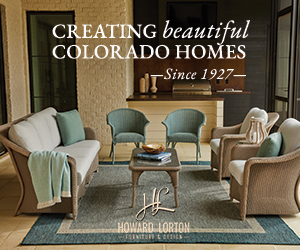Indoor-outdoor living at its best
By Heather Shoning
Your home’s outdoor landscape design can make or break your connection from indoor to out. Ideally, a thoughtful arrangement of useful spaces, such as outdoor dining, living and play areas, becomes extensions of your indoor rooms.

At the core of every outdoor design is the hardscape—the structural foundation that defines outdoor areas by use, shaping the way people experience them, plus delineating areas for softscape elements like plants, flowers and trees that bring color and life to your yard.
The process of designing with hardscape elements begins with a clear understanding of the land itself. Every site has its unique topography, climate and character, and these natural conditions play a crucial role in shaping the final design. Before a single stone is placed, the layout must be thoughtfully considered—what spaces are needed, how the pathways will connect one area to the next and where gathering spaces will be located. Additionally, if your yard has any slope, walls, steps and terraces will be used to create flow.
One of the fundamental aspects of hardscape design is the creation of functional outdoor spaces. Patios, decks and terraces serve as extensions of the home, providing areas for dining, entertaining or simply unwinding in the fresh air. The choice of materials for these surfaces is critical, as they must withstand the elements while maintaining their beauty over time. Natural stone, with its rich textures and earthy hues, blends effortlessly with our mountain aesthetic, while concrete pavers offer a sleek, modern look with unmatched durability. A recent project by Dream Makers Landscape incorporates natural, rough-hewn stone in a light color with dark and light gray sleek tile that delineates an outdoor kitchen, dining area and a firepit gathering space.
Wood decking brings warmth and character to a space. However, it requires maintenance to endure the demands of weather and use, so many landscape contractors will recommend high-quality synthetic decking for years of beauty and use.
Pathways and walkways are another essential hardscape feature, doing more than connecting different areas—they set the tone for the entire experience. A meandering stone path through a garden connotes a leisurely pace, while a clean-lined concrete walkway leading to a front entrance suggests a sense of formality and direction. The choice of materials here—whether flagstone, brick or even permeable pavers—it impacts both the aesthetics and the functionality of the space.
Walls and retaining structures are often necessary structural support elements for years with sloped or uneven terrain. Freestanding walls, on the other hand, offer privacy and protection from wind or noise and, when thoughtfully designed, can become an integral part of the outdoor environment rather than simply a divider.
Once you’ve settled on the hardscape spaces, it’s time for the fun outdoor living additions such as a swimming pool, other water features, a fire pit or fireplace, and more. Pool decks and fireplace surrounds create a bridge between the hardscape materials and the functions of your yard. A well-placed fountain or waterfall can become a focal point, as well as a way to drown out noise from a nearby street. Fire pits and fireplaces anchor outdoor seating areas with warmth and ambiance, extending the usability of a space well into the mile-high cool seasons.

Lighting is another crucial yet often overlooked component of hardscape design unless you work with a professional landscape designer. The goal is not to overpower the natural darkness but to create a warm, inviting glow that enhances the outdoor experience, bringing your outdoor living space to life after sunset. Subtle pathway lighting and integrated LED accents within steps or seating areas enhance safety, while uplighting trees or walls highlights beautiful features.
Ultimately, hardscape design is the foundation upon which all other landscape elements are built, providing structure without overshadowing the natural beauty of the surroundings. Whether a space is defined by rustic stone terraces, contemporary concrete walls or classic brick pathways, the key lies in merging functionality with aesthetics and—most importantly—inspiring you and your family to get outdoors!


